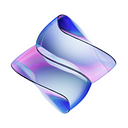The SEDA community has had a thrilling April with lots of progress to share. Here’s what we’ve been up to this month!
Real-World Asset Tokenization: A New Investment Frontier
It’s a well-known fact that our current financial systems can be fickle and that even the most seemingly stable institutions can collapse at a moment’s notice.
If recent financial crises have left you reeling, questioning the stability of the institutions you’ve long trusted with your money, you’re not alone. Our highly centralized financial systems have faced a significant loss of trust in the last few years. We’ve grown increasingly wary of the systemic vulnerability, custody risk, and bank runs associated with traditional finance so we want financial products with greater transparency, security, and stability.
The tokenization of real-world assets is a financial product that has gained popularity due to its ability to create digital tokens representing ownership in tangible assets, such as real estate, art, and fiat currency.
Tokenizing our real-world assets can unlock a range of benefits for investors, including:
- Counter-party risk
- Increased liquidity & transparency
- Fractional ownership
Learn more here.
SEDA Engineering: April Update
As we wrap up April 2023, we are proud to announce the completion of the first version of the SEDA protocol, testnet-1. Alongside this, we also made progress on several other important topics, which we would like to highlight below.
SEDA Protocol: Testnet-1 Release
This release includes staking functionalities, a basic PoS consensus algorithm, and support for aggregate signatures. The latter is a critical feature for our bridging design across any chain.
In addition to these features, we conducted internal code reviews and made significant codebase improvements. For example, we upgraded our WebAssembly runtime to the latest version of Wasmer and reduced the gas cost for bn254 operations, which is a critical optimization for signature aggregation.
Finally, we improved the node operator user and developer experience by adding more ergonomic CLI commands for staking and creating scripts for automatic deployment and bootstrapping.
Main-chain Indexer
We are also excited to report progress on the future SEDA Explorer. Specifically, we defined the scope and designed the architecture of one of its most critical back-end components: the indexer. This component will listen to new events of the SEDA protocol and store them in a database for use by the front-end.
Exploring Other Alternatives
As we continue to develop the SEDA protocol, we are always looking for ways to improve its design and functionality. To that end, we invested some time reflecting on the current design, its main drawbacks, and how we could overcome those. Specifically, we are considering other alternatives to be used as the settlement layer for our SEDA protocol.
We believe that this report accurately reflects the progress made by our engineering team over the past month. As always, we remain committed to building innovative and impactful technologies, and we look forward to sharing more updates with you in the future.
In Case You Missed It
- #SEDABytes: The SEDA committee selection process
- #SEDABytes: The growing popularity of real-world asset tokenization
- #SEDABytes: How SEDA contributes to trustless ownership of your assets
- How Astria’s decentralized network of sequencers could take oracles to the next level
- Sovereign SDK and the magic of software composability
- SEDA Head of Research Mario Cao is speaking at the Blockchain Oracle Summit in July! More details here
About SEDA
SEDA is a multichain, permissionless protocol connecting real-world data to any network on-chain.
SEDA is backed by world-class investors such as Distributed Global, Coinbase Ventures, Reciprocal Ventures, Coinfund, Maven 11, Flow Ventures, among others.
Join SEDA’s community:
Telegram: https://t.me/sedaprotocol
Discord: https://discord.com/invite/wsNwx2N75B
Twitter: https://twitter.com/sedaprotocol
